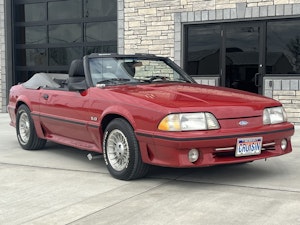Media | Articles
From cars to culture, the only constant is change
A test driver I met once who worked at Lamborghini around 1974 told me about Ferruccio Lamborghini’s last days with the troubled company. One afternoon, a group of workers confronted the comandante by the gate and asked about rumors that the factory was for sale. “Yes,” Ferruccio is said to have responded, “I found some idiota to buy this company.” Lamborghini retired to his vineyard with his fortune and watched as the idiota failed—as did the next one, and then the Italian government and a few idiots after that. The fact that Automobili Lamborghini still exists is in defiance of enormous odds.
It’s not that Lamborghini was managed entirely by incompetents—though surely there was some of that. It’s that the economics of building luxury playthings are so brutal. After all the development and certification costs, the profits can be vaporous. Enzo Ferrari figured that out way back in the 1960s and, after famously dabbling with Ford, sold out to Fiat. And that was when the business was easy, before regulations.

Aston Martin’s recently fired CEO, Andy Palmer, liked to point out that Aston had gone bankrupt seven times and had only been profitable for two years of its century-long existence. And McLaren is reportedly considering selling shares in its storied F1 team to raise emergency cash. In the sports car racket, if you haven’t partnered with a big car company, you’re broke or likely soon will be. And should you survive, your future is electrified push-button slot cars in which anyone with a pulse can go warp speed, protected by software that makes everyone seem competent enough to do so.
And with that, a glorious chapter in our automotive story will be over. The few new cars left with spirited engines and direct mechanical controls have a meteor coming with their name on it. It’s sad, but the evolution is inevitable. Throughout history, certain art forms have simply run their course. Orchestral music enjoyed a few centuries of rabid popularity at the pointy tip of the cultural spear before spluttering largely to idle sometime in the mid-20th century. It was replaced by jazz, which was replaced by rock, which was replaced by pop, which was replaced by noise. As one art form stalls, the culture moves on, leaving some of its greatest masters dumped in pauper’s graves.

Most of us aren’t out shopping for McLarens, but this shift affects the plebes, too. The modern auto industry will likely never replicate the Datsun 510 with a light, small, rear-drive sports sedan. It doesn’t matter how many people plead for it. Or for a new Cadillac styled with the flamboyant confidence of the 1960 Eldorado. Or for racing cars with the sultry magnetism of the Porsche 917. For various reasons, nobody does that kind of thing anymore. What most of us think of as the quintessential era of automotive art is over, done in by technology and regulation and everyone’s apparent desire to have grilles the size of Connecticut pasted on trucks the size of Texas.
Marketplace
Buy and sell classics with confidence
But what a tremendous body of work the departed left us, a gift to humanity that will be enjoyed down through the generations. As Mozart continues to pack the seats, we will continue to hum over to car shows in our e-pods to see the treasures that the old virtuosos created for an earlier age. And if you’re lacking motivation to spin wrenches on your own classic, think of yourself as a deputized, badge-wearing preserver of culture. By fixing up your old car, you’re like a saxophonist who blows a few hours a day so people can still hear Charlie Parker the way the Yardbird was meant to be heard. Or a cellist who practices without fail so when that glorious surge of the bass strings arrives in the middle of Beethoven’s Fifth, the audience will soar right up to the gates of paradise.
OK, changing the oil on your Spitfire might not be quite that transcendent, but as the auto landscape moves into the silent silicon era, there is a nobility in preserving the old arts that future generations will thank you for. What Ferruccio probably said quietly after everyone walked away was, “God bless all the idiots.”










